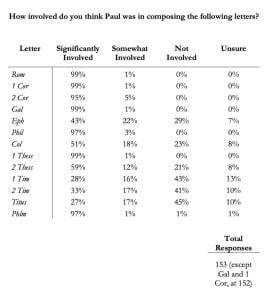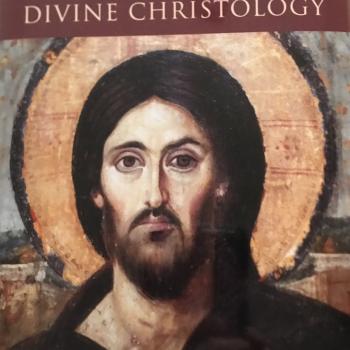The New Testament contains 13 letters attributed to the Apostle Paul, but which of these letters did he really write? Certain church fathers also thought that Paul wrote Hebrews, but this is unlikely. His name appears nowhere in this sermonic letter. Likewise, its Greek style, content, and theology suggest a different author, though one acquainted with Pauline churches. The author mentions Timothy as a “brother” (Heb 13:23).

Scholars normally break down the 13 Pauline letters as follows:
- Undisputed letters of Paul: Romans, 1 Corinthians, 2 Corinthians, Galatians, Philippians, 1 Thessalonians, Philemon.
These seven letters are normally thought to be written by Paul. That is why they are called “undisputed” letters.
- Disputed letters of Paul: Ephesians, Colossians, 2 Thessalonians, 1 Timothy, 2 Timothy, Titus.
There is no scholarly consensus on whether these six letters are actually penned by Paul. That is why they are called “disputed” letters. Others use the term Deutero-Pauline to describe them, a sort of “second” canon of letters that are questionably attributed to Paul.
In this short post, we cannot go into the reasons why each of these letters are rejected by some scholars and questioned by others. Such inquiries of authorship developed from the Enlightenment period when biblical writings started to be critically examined. This took place through the process of reasoning rather than dogma and religious belief.
A Pauline Spectrum
Modern (and post-modern) scholars normally take into consideration that Paul did not need to actually write his own letters for him to be considered the author. It is clear that Paul used an amanuensis or ancient secretary to write his letters for him. For instance, in Romans 16:22, Tertius claims to be such a writer.
Likewise, some of Paull’s colleagues such as Timothy, Silvanus (Silas), and Sosthenes are sometimes mentioned with him at the beginning of his letters (e.g., 1 Cor 1:1; 1 Thess 1:1, etc). They may have assisted with writing his letters.
Other times it’s at least possible that Paul may have given his colleagues freedom to write in his name. Or, perhaps a colleague may have written in a letter some of Paul’s memoirs after he was beheaded by Nero in Rome.
Still, others suggest that some letters attributed to Paul were written long after his death, and not by one of his colleagues. These writings are pseudonyms.
A Recent Survey on Pauline Authorship
New Testament scholar Bruce N. Longenecker, along with his doctoral student Zen Hess, recently conducted a survey at the national Society of Biblical Literature (SBL) conference in San Diego (Nov. 23–26, 2024). They wanted to find out what biblical scholars today believe regarding the authorship of the 13 letters attributed to Paul. A total of 153 SBL members participated om the survey.
Longenecker’s survey takes into consideration three levels of Paul’s involvement with his letters. He may be significantly involved in writing his letters, somewhat involved, or not involved at all. Another option is that the scholar is not sure of Paul’s involvement.
Here are the results of the survey:*
My Reflections on This Survey
We have to also take into consideration potential setbacks regarding this survey. For example, many of the participants were probably Americans given that this survey was conducted in the U.S.A. Do American biblical scholars represent well other biblical scholars around the globe? I suspect that European scholars would generally be more skeptical about Paul’s authorship, and scholars from other parts of the globe might be more conservative about Paul’s authorship.
Another potential setback is the number of survey participants. Only 153 members took the survey. This represents only a small fraction of the total amount of SBL members. If 1,530 members participated, the survey would seem to reflect better what SBL biblical scholars believe.
Nevertheless, this survey is actually encouraging. It perhaps shows a trend that recent scholars who think critically about Pauline authorship are coming to conclusions that are steering away from the pseudonym option that was quite popular in the 20th century.
In every case except for Ephesians and the Pastoral letters (1–2 Timothy, Titus), a majority of those surveyed think that Paul was significantly involved in the writing of the letters. If we include that Paul was either significantly or somewhat involved in the writing, then Ephesians receives a 65% majority. The majority, however, think the Pastoral letters were either not written by Paul or are unsure. Interestingly, 51% think this way about 2 Timothy, while 50% think Paul was significantly or somewhat involved in its writing. Apparently, someone voted twice!
Moving Forward
It appears that 2 Thessalonians, Colossians, and to a lesser extent, Ephesians, are finding their way back to the undisputed side of the Pauline corpus. The Pastoral letters, on the other hand, are not, though 2 Timothy has a fighting chance.
My own studies of the Pastoral letters lead me to consider that Luke, Paul’s colleague, may have had a hand in writing these. If so, then perhaps Paul may be “somewhat involved.” There is a unique cross-over of Greek vocabulary between these writings and Luke-Acts. More studies should be done to confirm (or disconfirm) this. Perhaps we should take more seriously the words in 2 Timothy 4:11 when Paul, apparently during his final days in prison, says that “Luke alone is with me.”
Notes
* This survey chart is used by permission from Bruce Longenecker. Elsewhere see it, for example, here.














